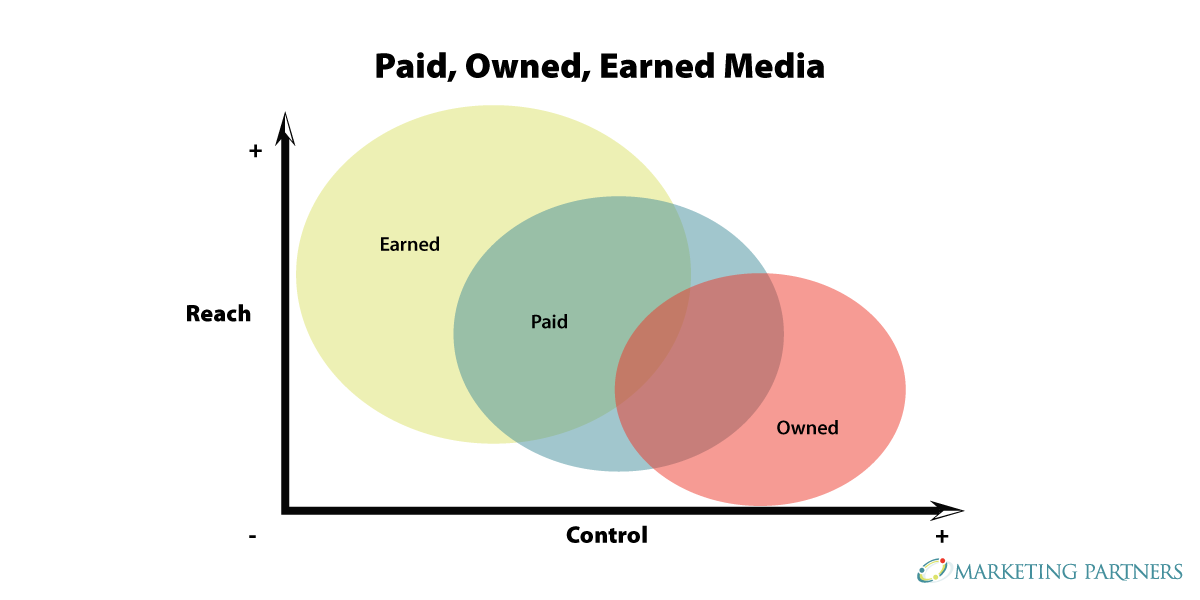How to Use Your Core Values to Inspire, Retain, and Energize Your Team
For the last few decades, but especially so in recent years, people are seeking out more than just an income from their place of employment. More...
5 min read
Pat Heffernan
:
10/10/24 10:15 AM

In today’s rapidly evolving media landscape, understanding where and how your story is told isn’t just strategic—it’s essential. How you communicate builds trust, earns credibility, and fuels momentum for your mission—whether you're a nonprofit, a public agency, or a social enterprise committed to change.
That’s where the Paid, Owned, and Earned Media (P.O.E.M.) Framework comes in—a model that has evolved significantly since it first emerged more than a decade ago.
You may have heard the terms "paid, owned, earned media" bandied about and been curious. You want to know more. eMarketer is a helpful start: "paid media is advertising inserted next to another’s content; owned media is brand-created content; and earned media is getting someone else to provide content about a brand." But these definitions are blurry in practice and not everyone is using them in the same way. It seems it's time for this marketer to share my view of how to use the evolving paid, owned, earned media framework for effective marketing strategy.
The proliferation of online media and social networks gave rise to this discussion. Understanding media channels used to be so much easier. First you researched the media preferences and habits of your target customers. Then you developed your spending allocations for advertising (or paid media) across the media channels preferred by your customers—television, radio, online, and so on, and finally, you added your media strategies for public relations (or what was called earned or unpaid media). But now we find ourselves regularly discussing with clients the modified version we have developed of a framework commonly referred to as Paid, Owned, and Earned Media, or P.O.E.M. for you acronym nuts.
Ideally, these media types work best together. But where and how to proceed can be a dilemma. Way back when in 2010, Kirk Cheyfitz of Story Worldwide offered what was then a useful 3-step way to think about integrating paid, owned and earned:
One memorable example, the 2010 Old Spice Man campaign from Procter & Gamble, started off with TV commercials (paid), migrated to a brand microsite and YouTube channel (owned), was boosted by consumer interaction and word-of-mouth on social sites and beyond (earned)—while continuing to be fed by more online advertising to drive traffic. Though the campaign drove a significant short-term increase in sales, as Gary Vaynerchuk chronicled, there was no brand-customer engagement to sustain the momentum.
I had several concerns with the original Forrester P.O.E.M. framework as presented. Although it was a useful starting point, Forrester's table and subsequent iterations developed by others list consumers as a media channel. That just does not work for me. People are not media channels, even when encouraging positive word of mouth is desirable. And when has it ever not been desirable?
The other common (mis)interpretation of the P.O.E.M. framework that has emerged over the past decade is adding social media as a separate, fourth type of media often referred to as “shared media.” Any public relations pro can tell you that each media outlet is 'earned' differently, that you must listen first, you need to offer different content to "earn" placement for your message -- and there are no guarantees the message will appear without distortion or commentary.
In my mind, social media networks are different from traditional PR media channels only in the degree to which your appropriate messaging varies, and in the opportunity for interaction and engagement. I view social media as Earned Media, albeit with its own specific characteristics, which is how it is shown in the P.O.E.M. table below. (Note that "boosted posts" or paid ads on YouTube, Facebook, Instagram or any other social network is simply paid media on another channel.)
Nike’s “So Win” campaign aired during the 2025 Super Bowl—its first Super Bowl spot in 27 years. Instead of promoting a specific product, Nike delivered a cultural message through the voices of elite women athletes like Caitlin Clark, Sha’Carri Richardson, JuJu Watkins, and more.
“You can’t win. So win.”
— Doechii, voiceover artist for Nike’s “So Win”
This bold declaration reframed familiar criticism into empowerment. It challenged perceptions of gender equity, visibility in sports, and what winning really looks like for underrepresented athletes.
|
Channel Type |
Examples from Nike’s Campaign |
|
Paid |
Super Bowl TV ad, digital billboards near sports venues |
|
Owned |
Nike.com feature pages, TikTok/Instagram behind-the-scenes videos, athlete interviews |
|
Earned |
66M+ views on Instagram in 24 hours; widespread press in Forbes, FOX Sports, Highsnobiety, Hypebae, and social praise from fans and athletes |
“Visuals. Messaging. Design. Absolutely no notes!!”
— Instagram user comment on @Nike post
In this media saturated world, it is easy to overlook the importance of where your messages appear or the environment in which your conversations take place. These tensions within the media framework—between control and reach, between credibility and consistency—have particular significance for values-based organizations and those seeking social change.
On one hand, earned media (including social media networks), offers the opportunity for your authenticity to shine through. On the other hand, when Facebook can and does change its terms without notice so suddenly your followers' posts are being resold to advertisers, perhaps you want to shift your media mix back in favor of your owned media where the environment itself can reflect your values and mission. The essential step is to be thoughtful about where and how you want your messages to appear within the ever-changing Paid, Owned and Earned Media framework.
The “So Win” campaign isn’t just a creative example—it’s a useful model for organizations striving to inspire change and deepen trust. We've seen ongoing consolidation in both digital and legacy media, with contraction in digital, print and broadcast until a few huge companies control more and more sources of information and entertainment. The impact of this trend for changemakers is less on where your messaging appears than it is on the timing flow of your efforts. You can't keep doing what you have been doing, in the ways you've been doing it.
The shift requires more than rearranging budget line items—it’s about rethinking the flow of your messaging based on trust, resonance, and community-building to be a signal amid the noise.

Why: Your website, blog, and newsletter are the only places you truly control the message and environment.
Steps to take:
Audit and update your existing owned platforms for clarity, accessibility, and alignment with your values.
Develop cornerstone content that educates, inspires, or solves a problem for your audience.
Use storytelling and brand voice consistently across channels.
“Owned media is where your values live. It’s the digital embodiment of your mission.”
Why: The best earned media doesn’t “happen”—it’s cultivated through relationships, relevance, and responsiveness.
Steps to take:
Identify the community voices, influencers, journalists, or organizations aligned with your mission.
Create shareable assets (visuals, headlines, quotes) and make them easy to embed or repost.
Pitch stories that connect your cause to timely conversations (local news, policy debates, awareness days).
“If you want to be talked about, start by being worth listening to.”
Why: Paid ads are most effective when they promote content that’s already been tested, refined, and proven to resonate.
Steps to take:
Track what owned content receives the most organic engagement, and use those insights to guide paid promotion as budget allows.
Choose channels where your audience is active and receptive—not just where ad inventory is available.
Budget for boosting content at key campaign moments (e.g., event registration, Giving Tuesday, major wins).
“Let paid media serve your mission—not define it.”
The landscape evolves, but the human dynamics remain constant: people trust, share, and act when your message is authentic, credible, and relevant. As a mission-driven communicator, start with your owned platforms, build out through earned trust, and amplify thoughtfully with paid channels. That’s the equation for sustainable influence—and real change.
Editor’s note: The original version of this post was published in January 2011 and was most recently updated in October 2024 for freshness, accuracy, and comprehensiveness.
The Change Conversations blog is where changemakers find inspiration and insights on the power of mission-driven communication to create the change you want to see.
© 2009- to present, Marketing Partners, Inc. Content on the Change Conversations blog is licensed under a Creative Commons Attribution-Noncommercial-NoDerivs 3.0 United States License to share as much as you like. Please attribute to Change Conversations and link to ChangeConversations.
Creative Commons License may not apply to images used within posts and pages on this website. See hover-over or links for attribution associated with each image and licensing information.

For the last few decades, but especially so in recent years, people are seeking out more than just an income from their place of employment. More...

You know nonprofit organizations need websites just as small businesses do, but you may be surprised to learn nonprofit sites can be more complex and...

In today’s rapidly evolving media landscape, understanding where and how your story is told isn’t just strategic—it’s essential. How you communicate...